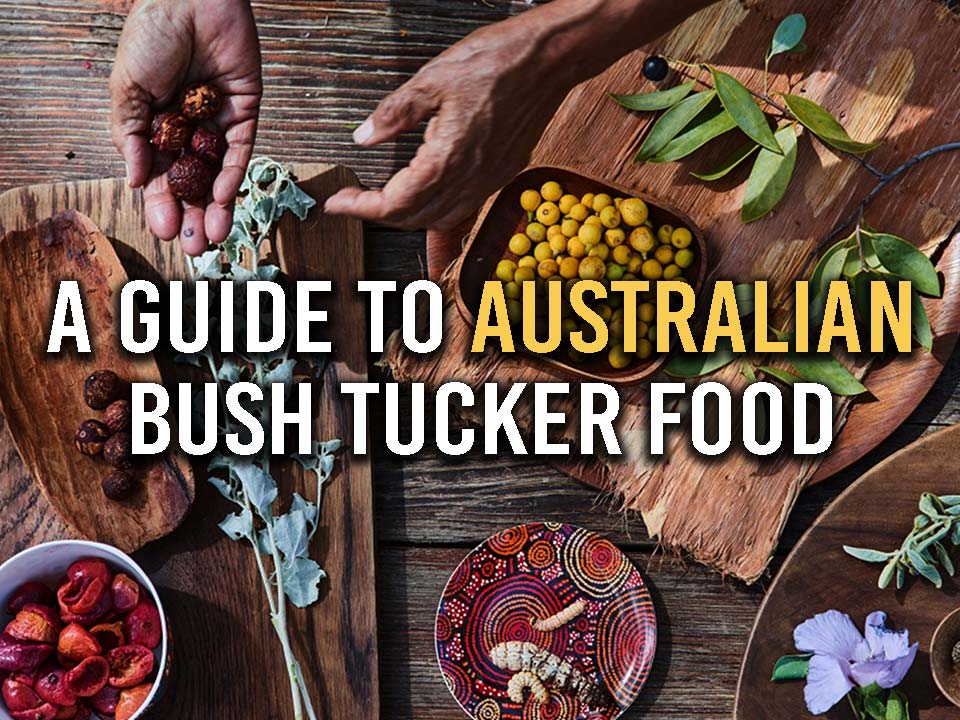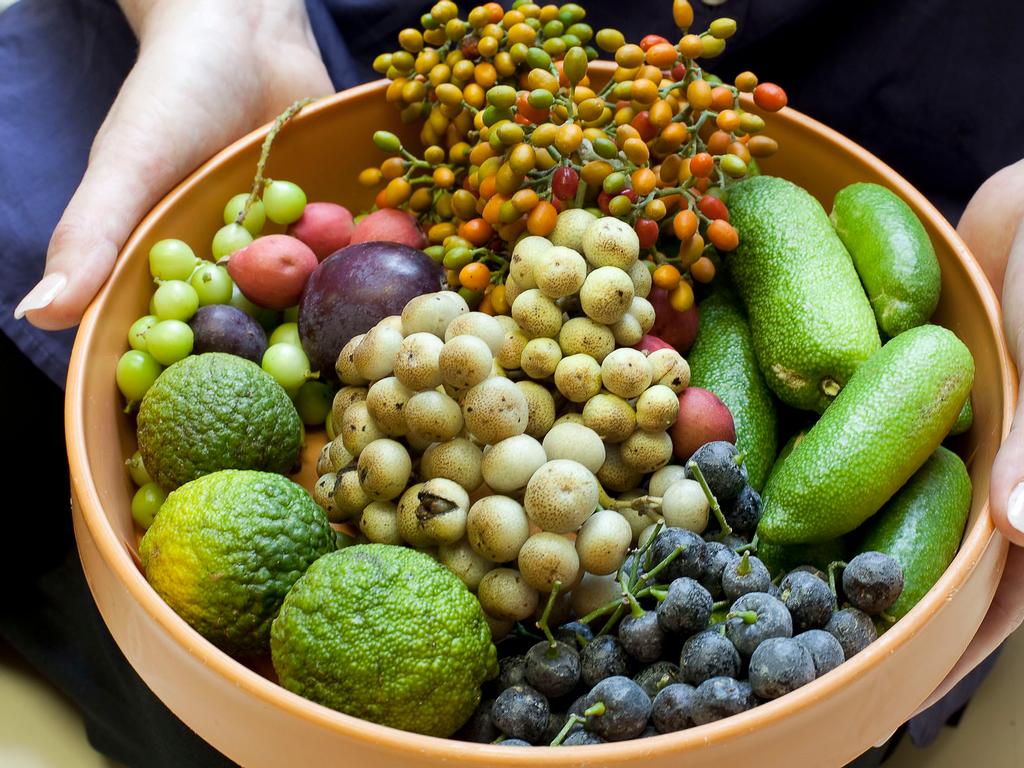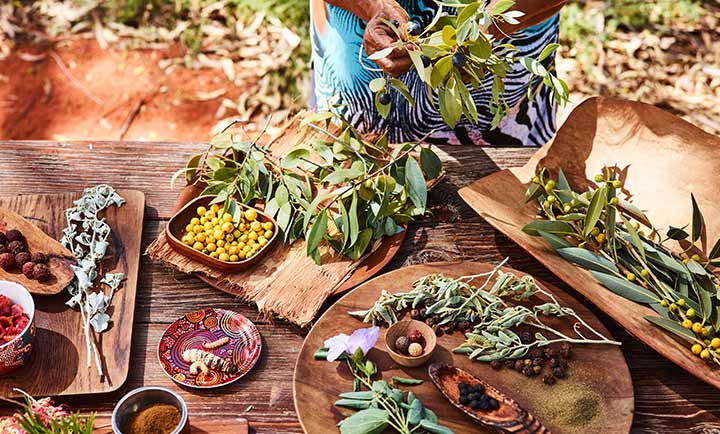Beyond Bush Tucker: Exploring the Rich Culinary Heritage of Aboriginal Australia
Beyond Bush Tucker: Exploring the Rich Culinary Heritage of Aboriginal Australia

The Australian landscape is renowned for its stark beauty and diverse ecosystems. But beyond the red earth and eucalyptus forests lies another treasure – a vibrant and ancient culinary tradition, deeply intertwined with the land and its people: the Aboriginal Australians.
For over 65,000 years, Aboriginal communities have thrived on a diet of "bush tucker," a term encompassing the vast array of edible plants, animals, and insects found in their environment. This isn’t just a source of sustenance; it’s a complex tapestry woven with knowledge, respect, and connection to the land.
Related Articles: Beyond Bush Tucker: Exploring the Rich Culinary Heritage of Aboriginal Australia
- Embracing The Sacred: A Journey Into The Realm Of Dreamtime
- The Intricate Tapestry Of Skin Names: A Journey Into Aboriginal Culture
- The Lingua Franca Of The Land Down Under: Unveiling The Official Language Of Australia
- Unpacking The Stories Behind Common Aboriginal Surnames: A Journey Through History And Identity
- Embracing The Spirit Of The Land: A Guide To Aboriginal Girl Names
The Art of Sustainability: Understanding Aboriginal Food Practices
Aboriginal food practices are characterized by a deep understanding of the land and its cycles. Unlike modern agriculture, which often relies on monocultures and external inputs, Aboriginal communities practiced a system of sustainable harvesting and resource management. This meant:
- Respecting the Land: The concept of "caring for country" is central to Aboriginal culture. It emphasizes a responsibility to maintain the health and balance of the environment, ensuring future generations can benefit from its bounty.
- Seasonality: Aboriginal people understood the rhythms of nature. They knew when and where to find specific foods, ensuring they harvested only what was needed and leaving enough for regeneration.
- Diversity: The Aboriginal diet was incredibly diverse, encompassing a wide range of plants, animals, and insects. This ensured a balanced intake of nutrients and minimized the risk of dependence on a single food source.
- Minimal Processing: Traditional Aboriginal food preparation methods were simple and efficient, often involving minimal processing or cooking. This preserved the natural nutrients and flavors of the ingredients.

A Journey Through the Bush Tucker Pantry:
The Aboriginal food landscape is as diverse as the continent itself. Here’s a glimpse into some of the key ingredients:
1. Native Plants:
- Kakadu Plum: This small, yellow fruit is a powerhouse of vitamin C, boasting 100 times more than oranges. It’s traditionally used in jams, chutneys, and even as a natural sweetener.
- Bush Tomatoes: These small, red fruits have a tangy flavor and are often used in salads, sauces, and chutneys. They are rich in antioxidants and vitamin C.
- Quandong: This large, red fruit has a sweet and tart flavor reminiscent of apricots. It’s often used in jams, pies, and desserts.
- Warrigal Greens: These leafy greens are packed with nutrients and have a slightly bitter flavor. They are traditionally cooked in soups, stews, and stir-fries.
- Saltbush: This succulent plant has a salty, savory flavor and is often used as a seasoning or in salads.


2. Native Animals:
- Kangaroo: This iconic Australian animal is a lean source of protein and iron. It’s traditionally roasted, grilled, or smoked.
- Emu: Another important source of protein, emu meat is lean and flavorful. It can be roasted, grilled, or used in stews.
- Goanna: This large lizard is a popular food source in some regions. Its meat is often roasted or smoked.
- Witchetty Grub: These large, white grubs are considered a delicacy in some areas. They are often eaten raw, roasted, or fried.
3. Native Insects:
- Honey Ant: These ants are known for their sweet, honey-like abdomen. They are often eaten raw or used as a sweetener.
- Bogong Moth: These moths are a seasonal delicacy, particularly in the high country. They are often roasted or ground into a flour.
The Revival of Aboriginal Food: A Modern Culinary Movement
In recent years, there has been a growing interest in reviving and celebrating Aboriginal food traditions. This movement is driven by a number of factors:
- Recognition of Cultural Significance: The resurgence of interest in Aboriginal food is a testament to the growing understanding and appreciation of Aboriginal culture.
- Health Benefits: Aboriginal food is often lower in fat and sugar and higher in fiber and nutrients compared to modern Western diets.
- Sustainability: Aboriginal food practices offer a model for sustainable food systems, emphasizing local sourcing, seasonality, and minimal processing.
- Economic Opportunities: The revival of Aboriginal food is creating new economic opportunities for Aboriginal communities, empowering them to share their knowledge and traditions with the world.
From Bush Tucker to Fine Dining: The Evolution of Aboriginal Cuisine
Modern chefs and restaurateurs are increasingly incorporating native ingredients into their menus, showcasing the versatility and unique flavors of Aboriginal cuisine. From traditional bush tucker dishes to innovative fusion creations, Aboriginal food is making its mark on the culinary scene.
Here are some examples of the evolving culinary landscape:
- Bush Tucker Restaurants: Dedicated restaurants are emerging, specializing in Aboriginal cuisine and showcasing traditional cooking techniques.
- High-End Dining: Chefs in fine dining establishments are incorporating native ingredients into their menus, creating innovative and sophisticated dishes.
- Fusion Cuisine: Aboriginal flavors are being blended with other cuisines, creating unique and exciting culinary experiences.
- Food Festivals: Dedicated food festivals are celebrating Aboriginal food and culture, showcasing the diversity and richness of this culinary tradition.
Beyond the Plate: The Importance of Cultural Preservation
The revival of Aboriginal food is not just about culinary innovation; it’s about preserving cultural heritage and knowledge. By sharing their food traditions, Aboriginal communities are passing on generations of wisdom about the land, its resources, and the importance of sustainability.
The Future of Aboriginal Food
The future of Aboriginal food looks bright. As awareness of this unique culinary heritage grows, so too will the demand for authentic and sustainable food experiences. This will create new opportunities for Aboriginal communities to share their knowledge, traditions, and stories with the world.
FAQ about Aboriginal Food:
1. Is it safe to eat bush tucker?
It’s important to note that not all plants and animals found in the Australian bush are edible. Some are poisonous or can cause allergic reactions. It’s essential to learn from experienced Aboriginal people or reputable sources before consuming any bush tucker.
2. Where can I try Aboriginal food?
Many restaurants and cafes across Australia are incorporating native ingredients into their menus. You can also find Aboriginal food at cultural events, farmers’ markets, and dedicated bush tucker tours.
3. How can I support the revival of Aboriginal food?
You can support the revival of Aboriginal food by:
- Patronizing restaurants and businesses that feature native ingredients.
- Learning about Aboriginal food traditions and sharing your knowledge with others.
- Supporting Aboriginal-owned food businesses.
- Participating in cultural events and festivals that showcase Aboriginal food.
4. What are the health benefits of Aboriginal food?
Aboriginal food is often low in fat and sugar and high in fiber and nutrients, offering a range of health benefits. It can help with weight management, improve gut health, and boost the immune system.
5. What are the challenges facing the revival of Aboriginal food?
The revival of Aboriginal food faces a number of challenges, including:
- Limited access to traditional food sources due to land clearing and other factors.
- Lack of awareness and understanding of Aboriginal food traditions.
- Limited funding and support for Aboriginal food businesses.
Conclusion:
The culinary heritage of Aboriginal Australia is a testament to their deep connection to the land and their ability to thrive in a challenging environment. By embracing this unique and ancient food tradition, we can not only enjoy delicious and healthy meals but also contribute to the preservation of cultural knowledge and the creation of a more sustainable future.

Closure
Thus, we hope this article has provided valuable insights into Beyond Bush Tucker: Exploring the Rich Culinary Heritage of Aboriginal Australia. We hope you find this article informative and beneficial. See you in our next article!


